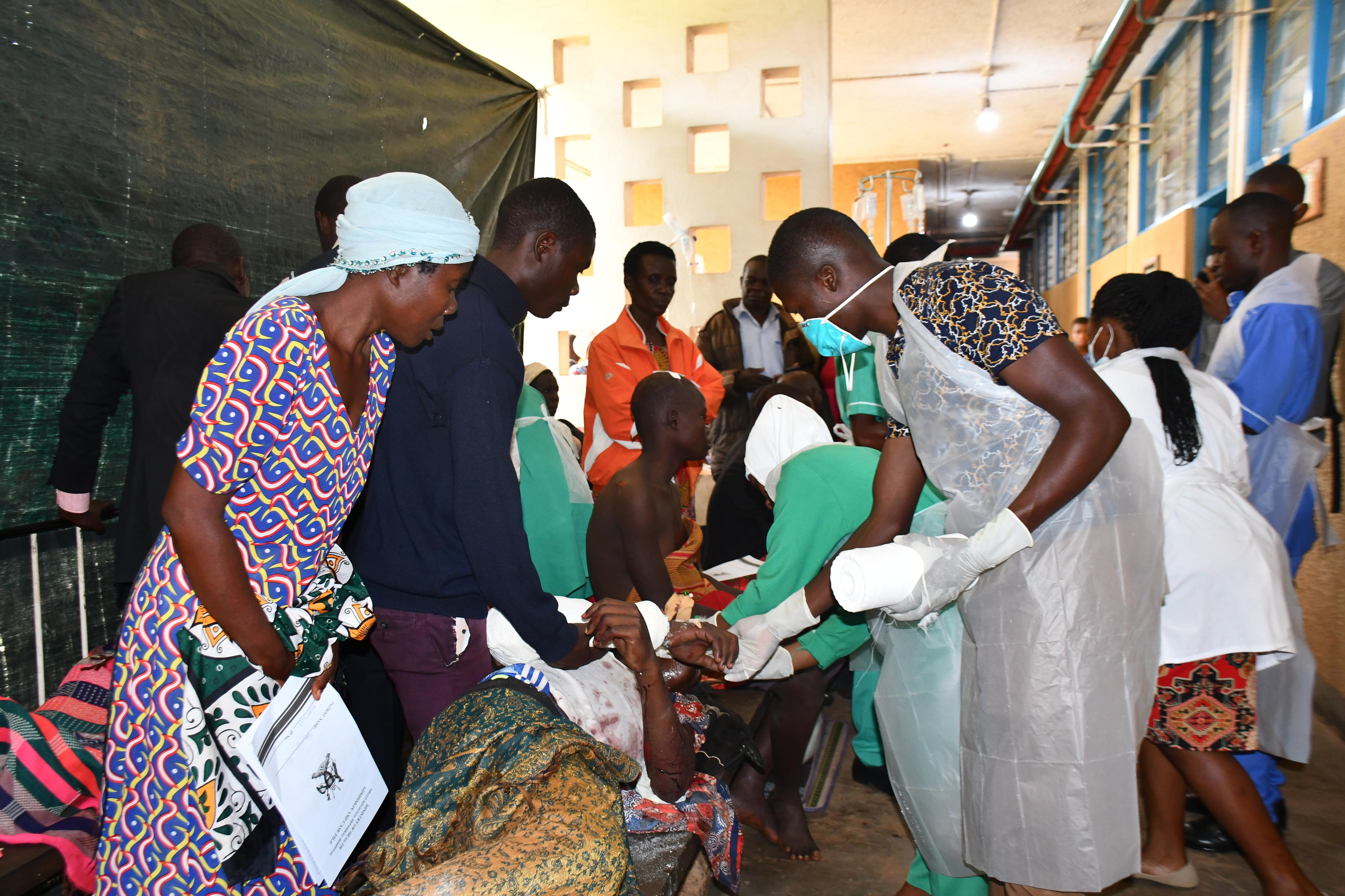Prime
Nodding disease: Crystals found in victims’ brains

A mother sits with her nodding child at a treatment centre in northern Uganda (L). The crystal-like substances which scientists found in the brains of children said to have been killed by nodding disease (R) and . Monitor & courtesy photo
What you need to know:
Unprecedented sightings baffle American scientists, but Uganda not changing disease management until conclusive findings.
Kampala- Scientists investigating the cause of a disease that makes victims get sporadic seizures, drip saliva and nod uncontrollably; have found crystal-like substances in portions of their brains.
The discovery during tests at the US Centres for Disease Control (CDC) laboratory in Atlanta, although unprecedented and still unexplained, has scientists encouraged they may be closer to fully understand the mystery illness and its origin.
The substances that glittered under polarising lights were observed in the pon, a part of the brainstem where the spinal cord connects.
Dr Wun-Ju Shieh, the medical officer who led the CDC team that examined samples from the brain of five dead Ugandan children, reported these as “interesting preliminary histopathologic (microscopic examination) findings, although their significance is currently unknown”.
“Such preliminary findings warrant a series of subsequent studies, including special histochemical staining (chemical analysis), immunohistochemical assay (response to antigens), molecular testing, ultra-structural study, electron-microscopy, biochemical investigations, and toxicological analysis,” Dr Shieh noted in a correspondence to Uganda’s Director General of Health Services Ruth Aceng.
In April this year, Ugandan scientists took for examination in the US brain samples and frozen tissues from four nodding syndrome victims and one epileptic case from Kitgum and Gulu districts.
The children were all aged between 12 and 15 years when they died, and one had reportedly developed an aggressive behaviour.
When sectioned, examinations showed the three nodding syndrome victims’ brains had varied abnormalities, with highest concentration of crystal-like material or lesion sighted in the samples of the child who passed on with worst clinical presentation. Nothing related was observed in the epileptic case.
By yesterday, the Centres for Disease Control in Atlanta was reported to be preparing for fresh toxicological tests on the Ugandan samples, but in another laboratory not its own.
Ugandan officials last evening declined to discuss CDC’s startling discovery of crystal-like substances in the brain of nodding victims, something Health minister Ruhakana Rugunda did not also highlight in his comprehensive May 13, 2014 update on the disease.
“We don’t want to rush into publicising things that are inconclusive, said Dr Bernard Opar, national coordinator of the nodding disease response. “We are depending on them (US scientists) to give us results of their further analysis and (for now) we are not changing the management of the cases.
The government says it has registered no new cases of nodding sydrome since it in 2012 established seven treatment centres in the same northern Ugandan districts battered by the infection.
Authorities carried out aerial sprays along Pager, Aswa and Agago rivers to kill black flies whose bites are associated with some cases.
Scientists are also evaluating whether nodding syndrome, observed in Tanzania in 1962 and lately more widespread in South Sudan, might be caused by tetramine poison associated with some toxic plants, vaccines and chemical weapons.
Both northern Uganda, which is afflicted by the disease, and its neighbouring South Sudan are post-conflict communities; raising suspicion the weapons used in the protracted wars may have something to do with the disease.
In May, minister Rugunda said “the affected people believe that nodding syndrome is due to evil spirits of the dead who were not buried, chemical effects of the prolonged LRA war, and LRA crimes committed against the neighbouring communities.”
Still, there are no answers to why the illness attacks only children, and in most cases, some and not all in a family and whether there is a genetic predisposition.
Dr Avindra Nath, a neurologist and clinical director at National Institute of Neurological Disorders and Stroke, who studied nodding syndrome in Uganda in 2012, together with American peers spent two weeks examining children from 10 Ugandan families for neurological and genetic disorders at the Bethseda bio-medical research facility in Maryland.
Dr Nath is looking into the possibility that “antibodies the body generates to fight the onchocerca volvulus (river blindness) worm also recognise a protein in the brain of vulnerable children and trigger the seizures,” according to NIH blog.
Dr Opar accompanied the airlifted children, but their separate investigations sponsored by the US government too proved inconclusive.
Meanwhile eleven experts, who studied nodding syndrome in South Sudan’s Mundri County, linked the disease to infections transmitted through black fly bites as well as consumption of a sorghum variety called serena, which was introduced as part of emergency relief.
“There was no evidence to suggest exposure to man-made neurotoxic pollutant or chemical agent, other than chemically dressed seed intended for planting but used for food,” the scientists from CDC, WHO, and American/European academic and research institutions reported in June 2013.
There are no reliable numbers or particulars of people killed by nodding syndrome before 2012, but some estimate put the toll at 500.
In May, court ordered government to settle out of a court a case brought against it by two MPs from Acholi sub-region over perceived neglect of the nodding syndrome victims.




